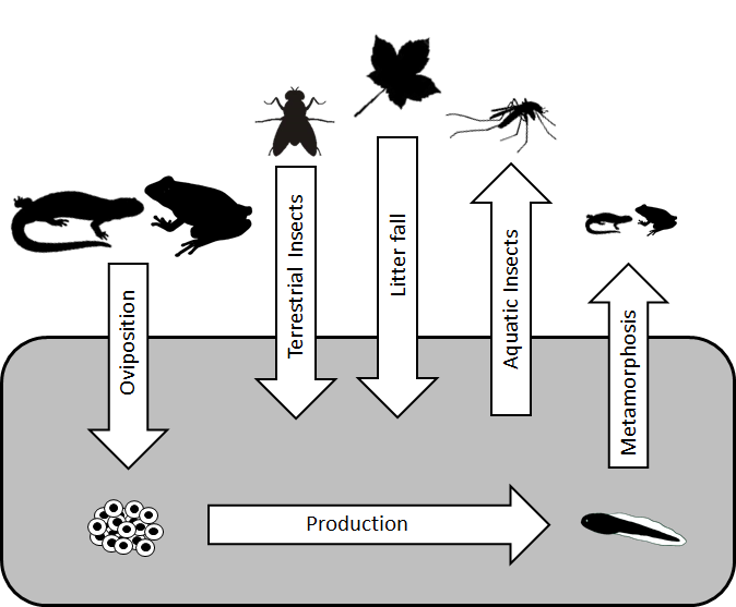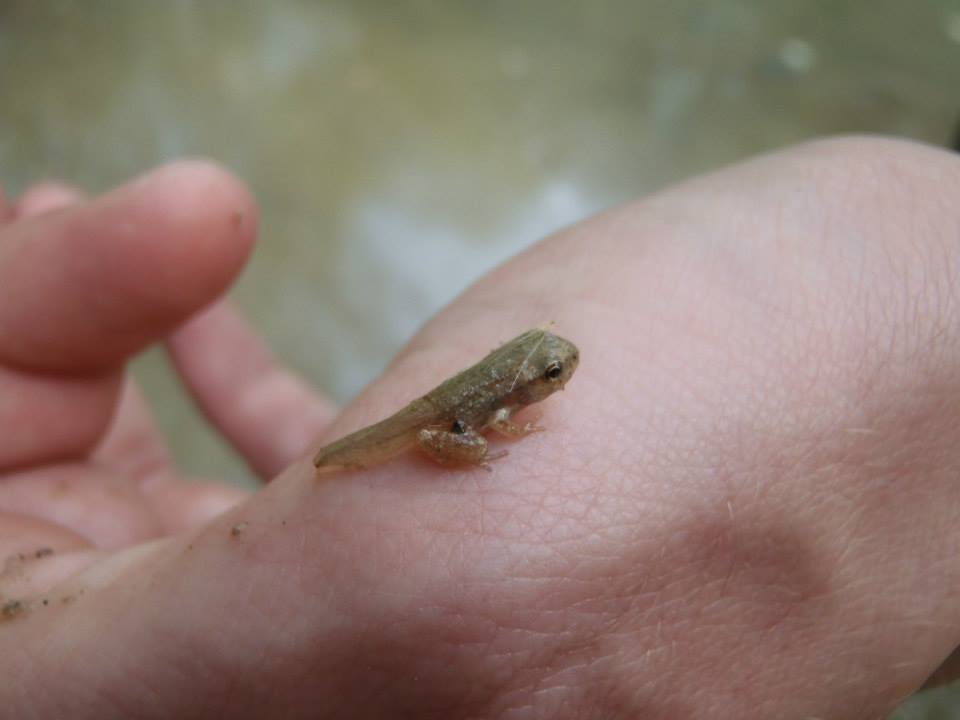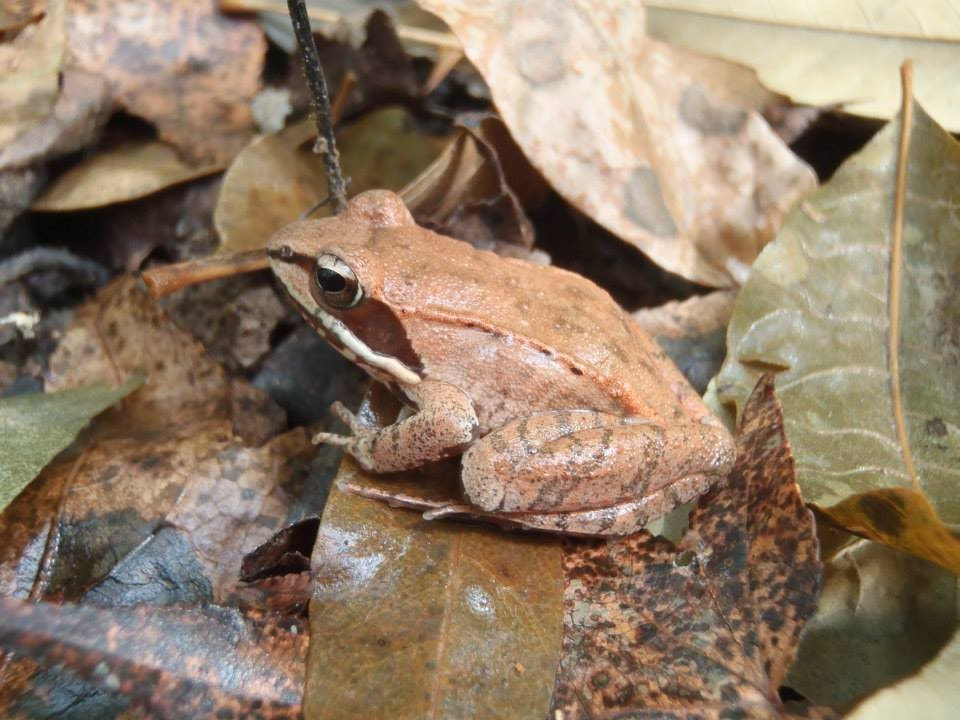Overview
The magnitude, form, and timing of resource subsidies across aquatic-terrestrial boundaries can be affected by abiotic (e.g. climate change), biotic (e.g. community assembly, invasive species, trophic cascades), and anthropogenic factors (e.g. pesticides, contaminants). I am interested in investigating how these elements may impact not only aquatic food webs, but also cross-boundary resource fluxes and potential cascading effects in recipient systems.
Restoration of western streamsMany stream ecosystems throughout the Southern Rockies, have been degraded by heavy livestock grazing, flow alterations for irrigation, human development, and the extirpation of beaver. Using a long-term data set from Kimball Creek, a 3rd order stream near De Beque, CO, I am investigating the impacts of natural recolonization of North American beaver (Castor canadensis) on stream morphology and aquatic insect emergence subsidies to riparian predators such as birds, bats, and spiders. This research will provide a better understanding of ecosystem functioning in degraded western streams and guide the future restoration goals of local landowners who seek to restore natural hydrological patterns and a native cutthroat trout (Oncorhynchus clarkii pleuriticus) fishery.
|
Temporary wetlandsSubsidies across aquatic-terrestrial boundaries are common in diverse food webs and can alter consumer distribution and increase consumer growth rates and biomass. Temporary wetlands occur throughout much of North America, are closely linked to the surrounding forest via forest-to-pond and pond-to-forest energy subsidies, and support unique assemblages of vertebrates and invertebrates adapted to the annual wet-dry cycles. These habitats have been historically overlooked compared to more permanent aquatic habitats. I quantified resource subsidies between eight temporary wetlands and the surrounding forest including terrestrial insect and leaf litter inputs, aquatic insect exports, and amphibian inputs via oviposition and exports via emergence of recently metamorphosed larvae. Understanding these fluxes is critical to understanding how these aquatic and terrestrial food webs interact.
|
Subsidies of essential nutrientsA subsidy’s impact is not determined only by raw export, but the relative scarcity in recipient habitats. For example, n-3 long-chain polyunsaturated fatty acids (LC-PUFAs) such as EPA and DHA are more abundant in aquatic environments, play essential physiological functions in reproduction and immunity and are transported across aquatic-terrestrial boundaries by emerging aquatic insects and amphibians. I quantified LC-PUFA export for amphibians emerging from temporary ponds. Tissue concentration of EPA and DHA were within the ranges reported for many aquatic invertebrates and freshwater fish. However, amphibian mediated subsidies were higher than those of aquatic insects, indicating amphibians may be an overlooked but important source of LC-PUFA for terrestrial consumers.
This export of essential nutrients may directly benefit organisms exploiting wetland habitats and such aquatic-terrestrial subsidies may have far-reaching effects on surrounding ecological communities. I analysed tissue fatty acid composition and encapsulation response of wolf spiders from wetland and upland sites. Tissue levels of EPA and DHA were significantly higher in wetland spiders compared to upland spiders and wetland spiders exhibited significantly higher immune function. Spiders receiving LC-PUFA subsidies may therefore enjoy greater fitness. Thus, while subsidies of LC-PUFAs are relatively small in magnitude, their essential role in immunity could alter disease dynamics for riparian communities. |
StoichiometryCarbon (C), nitrogen (N), and phosphorus (P) are transported across aquatic-terrestrial boundaries via amphibian oviposition and metamorph emergence. I quantified net fluxes of C, N, and P between temporary wetlands and surrounding forests. Patterns of C, N, and P flux were driven by physical characteristics of ponds (i.e. hydroperiod and freezing), trophic interactions and species composition, and the stoichiometric ratios of the subsidy material (eggs vs. metamorphs). Additionally, environmental stressors may alter exports of these nutrients. We showed that glucocorticoid stress hormones reduced P excretion and whole-body tissue P concentrations in wood frog tadpoles via effects on skeletal development. This could have ecosystem level effects as tadpoles play major roles in nutrient cycling in some systems.
|
Amphibian Cross-boundary effectsMany amphibians have biphasic life-cycles in which larvae are aquatic and adults are terrestrial. The emergence of recently metamorphosed amphibians represents both a subsidy of prey and a subsidy of predators to the surrounding terrestrial environment. I am interested in investigating the importance of this subsidy and its impact on the terrestrial food web.
|





